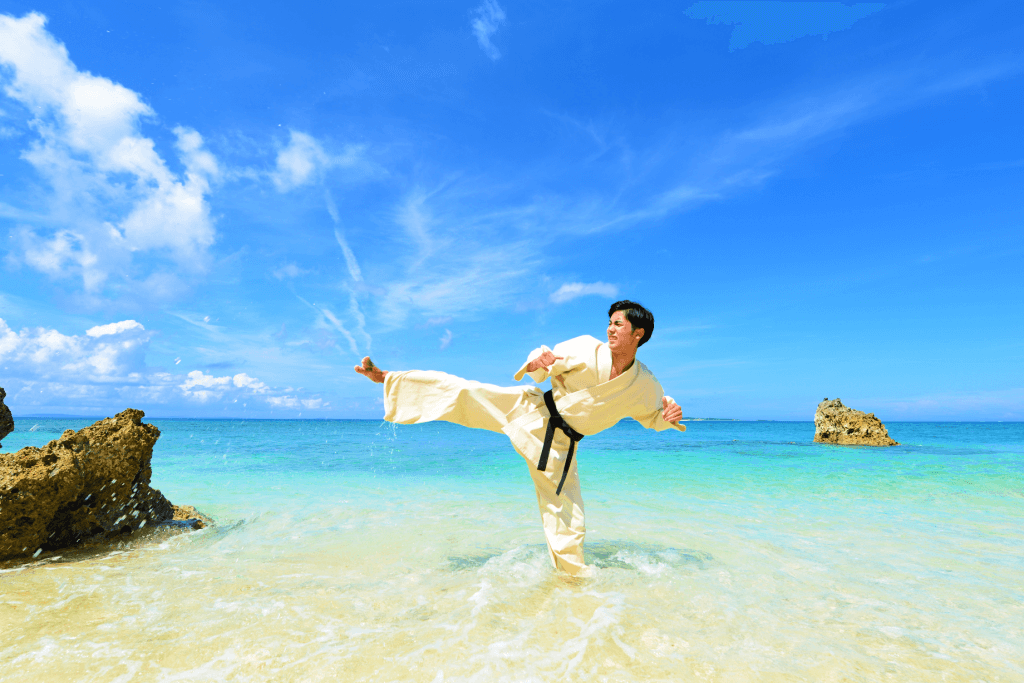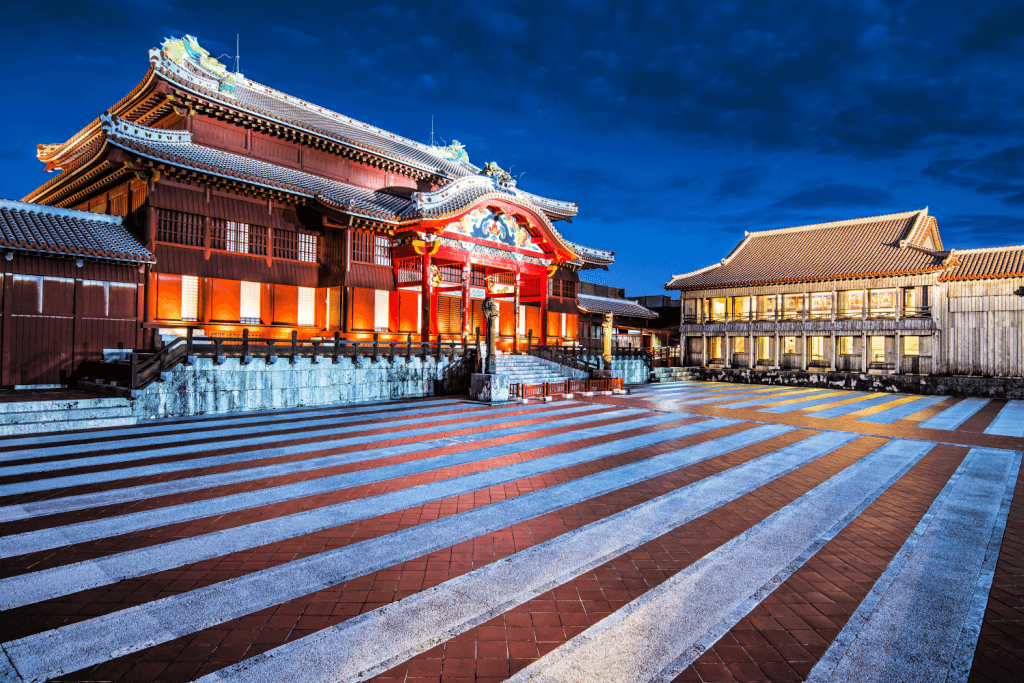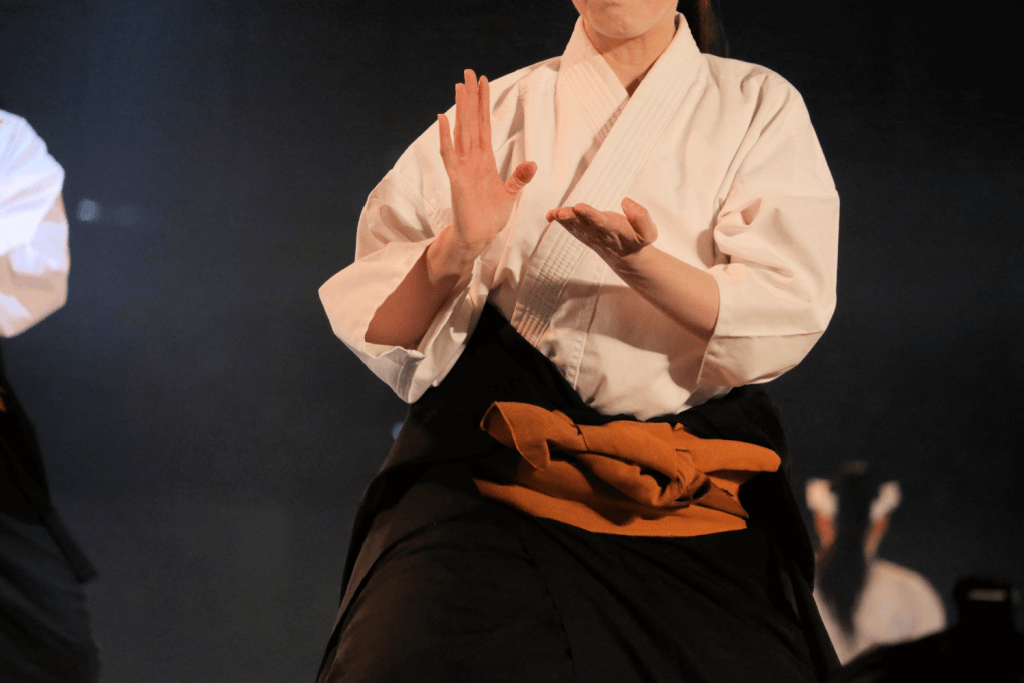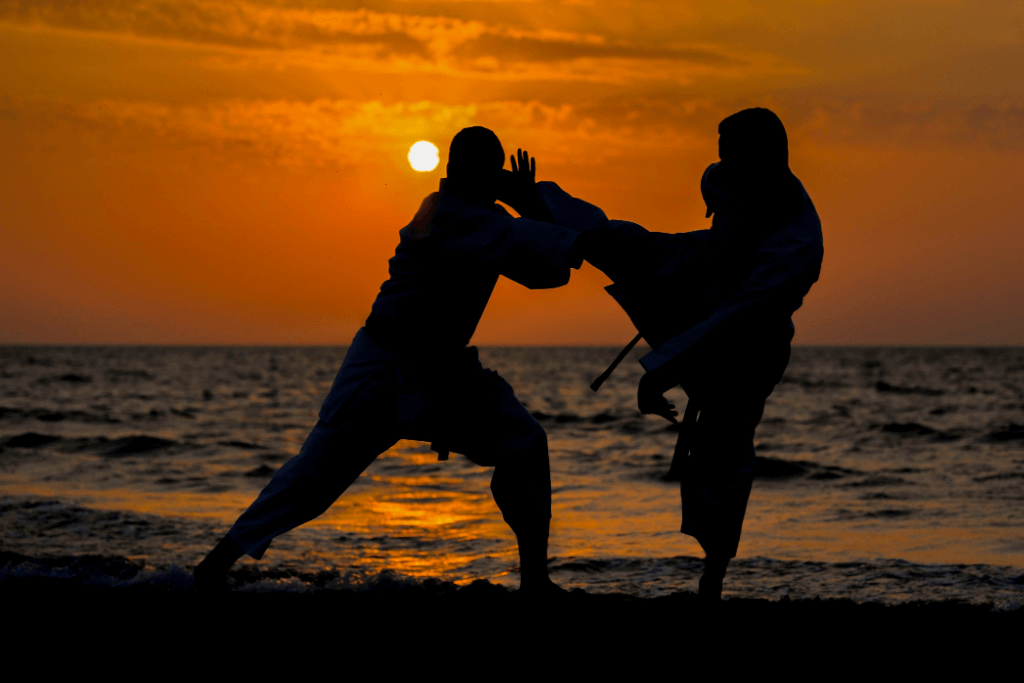martial arts, okinawa
Martial Arts in Okinawa: Respecting the Art of Warrior Spirit

Devon Lord-Moncrief
Posted on July 27, 2023
Share:

Training in martial arts is a practice that reaches back to the earliest human civilizations. The need and necessity to protect oneself have always been crucial in developing cities, governments, and military forces. Martial arts training has taught humans how to defend themselves against predatory animals and each other. For some, it is simply a means of perfecting physical combat; for others, it is a blend of spiritual philosophy and physical fitness.
On the island of Okinawa in Japan, combat practice dates back centuries. It has woven itself deeply into the cultural fabric and identity of the island. Over the centuries of development and teaching, martial artists in Okinawa have evolved some of the world’s most recognizable and respected styles. They created a means for the working class to defend themselves, and it has since become a significant self-defense school.
The Early Days of Okinawan Martial Arts
Three kingdoms of Okinawa once existed: Hokuzan (北山, Northern Mountain), Chūzan (中山, Central Mountain), and Nanzan (南山, Southern Mountain). King Shō Shin unified the three kingdoms that existed during the Sanzan Period (Three Mountains) to form the Kingdom of Ryukyu in 1429.

King Shō Shin ordered the ban on teaching and practicing martial arts. He was concerned about the spread of Tō-te and Ryukyu kobudō, or the art of deception, among the people. The ban continued in 1609 after the invasion of Okinawa by the Satsuma Domain of Japan.
Okinawan Martial Arts Today
Luckily, the ban on teaching and learning martial arts in Okinawa has long since been lifted, and the practice has significantly evolved. In Okinawa, they referred to them as “te,” while in Japan, it was called “tii,” with both phrases meaning “hand.” The term “te” varied depending on the practicing area, with a corresponding prefix denoting the town the form originated from (such as Shuri-te, Naha-te, and Tomari-te.) This naming convention was helpful as it helped Okinawan martial arts develop more naturally and fluently between cities.

Today, instructors still teach the three primary schools of Okinawan martial arts, and from each of them, many more specialized styles and teachings have emerged, including Naihanchi, Wankan, and Seipai. These specific styles are called kata or forms and aid in differentiating the multitude of moves and stances from one another. This form of combat sport has become a vast web of mastery, branching across many different forms, styles, and techniques.
Are you looking to enjoy snacks from Okinawa? Check out Sakuraco! Sakuraco delivers traditional Japanese snacks, teas, and sweets from local Japanese makers directly to your door so you can enjoy the latest treats directly from Japan!
The Birth of Karate
Over many centuries, the martial arts of Okinawa underwent a significant transformation due to the strong influence of China. Through exchanging knowledge and techniques, Okinawan practitioners adapted and developed their unique version of martial arts.
Various people experimented with new styles, and over time, these different approaches converged into what we now recognize as karate. It’s important to note that karate is not limited to a single fighting style but serves as an umbrella term for a diverse range of Okinawan martial arts. This distinction is often misunderstood in the West, where people usually see karate as one of the only martial arts from Asia in general.
How did karate influence the world?
The practice of martial arts is one that every culture on the planet has engaged in. Today, many people still learn these classic forms of self-defense, sometimes for recreation and others for protection. Popular styles include MMA (mixed martial arts), Muay Thai, Krav Maga, Tae Kwon Do, and more. Learning effective full-contact hand-to-hand combat will always be necessary, so it’s advantageous for students and masters alike to train under such a diverse range of styles.

While recent years have seen karate become a cliche and oversimplified term, a healthy culture continues to practice and teach general karate effectively. The most devoted students train in the more advanced kata, and it remains presented as a formidable style. Whether for sport, personal fulfillment, or military training, Okinawan martial arts is alive and well. Have you ever practiced an Okinawan martial art before? Let us know in the comments below.

Discover authentic flavors with Sakuraco
Get Sakuraco 

Discover authentic flavors with Sakuraco
Get Sakuraco 
Related Articles

Japanese Fish Bait: The Beautiful Art of Kebari
Kebari are traditional hand-tied flies used for freshwater fishing in Japan, especially in mountain streams where small insects form the main diet of native fish. Instead of bright plastic lures, kebari use feathers, thread, and natural materials to create subtle movements in the water.

Japan Holidays Guide: Relax, Explore, and Delight in Festive Fun
As the year draws to a close, everywhere buzzes with preparations for the holidays, and Japan is no exception. Despite the cold winter weather, you can feel warmth in the scenery, decorations, and festive activities across the country. Let’s explore the unique experiences of holidays in Japan that many people dream of enjoying at least once in their lifetime!

Tokyo Gardens: Five Beautiful Traditional Japanese Gardens to Visit
Tokyo gardens offer a relaxing escape for visitors looking to get a breath of fresh air. However, Tokyo has more than just the typical gardens we see in the West. Let’s explore five traditional Japanese gardens and what makes them unique!

Japan Cruise Spotlight: The Ultimate Guide to Abashiri Icebreaker!
Japan offers a diverse range of cruise experiences, taking in various stunning landscapes. But, in the chilly grip of winter, some voyages pull in adventurers from around the globe. At the forefront of these wintry trips is the Abashiri Icebreaker Cruise in Hokkaido.



